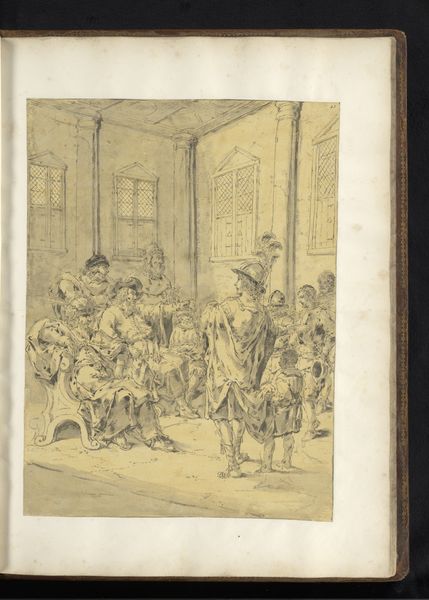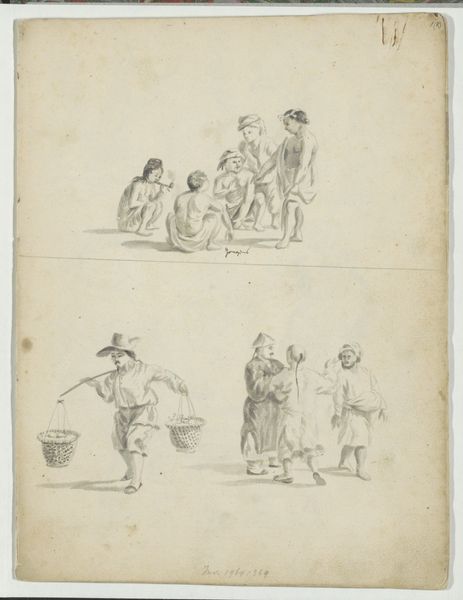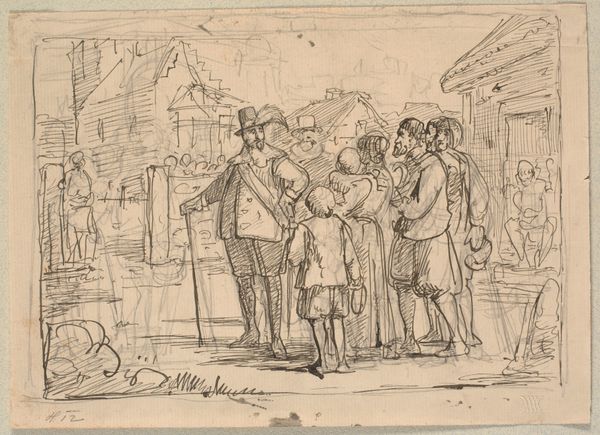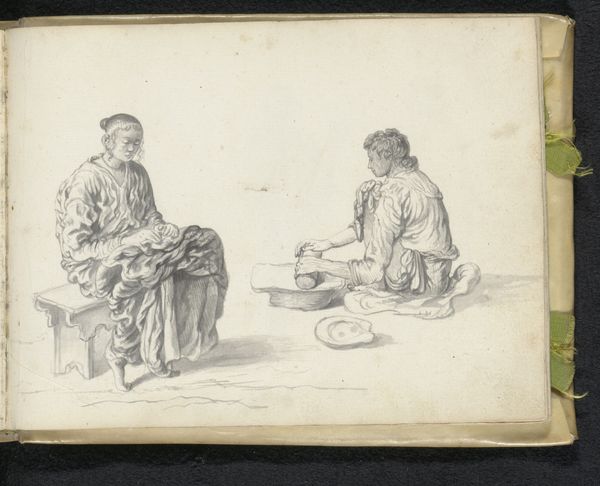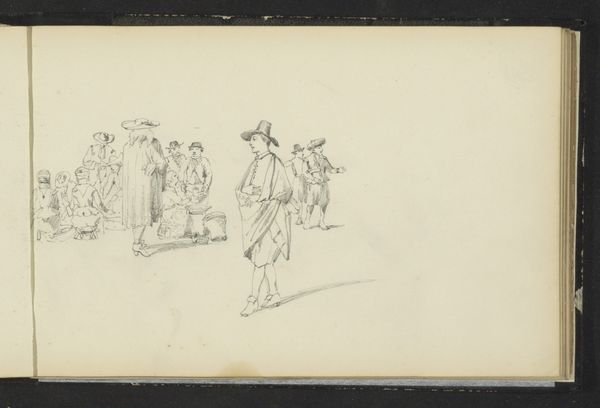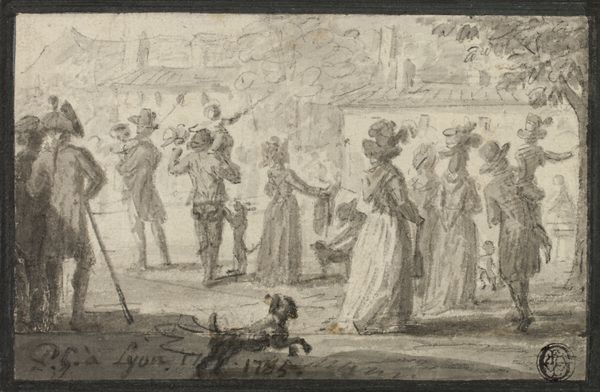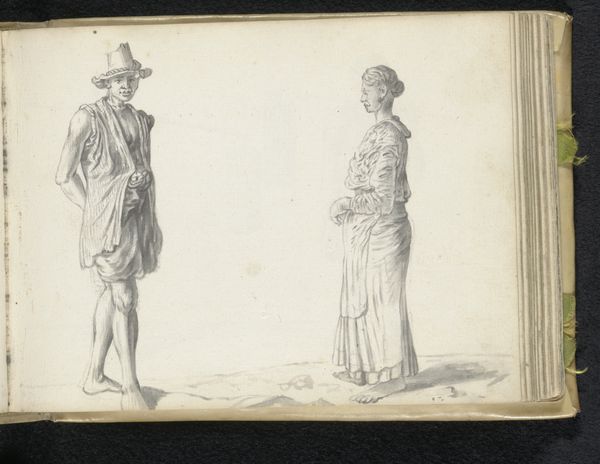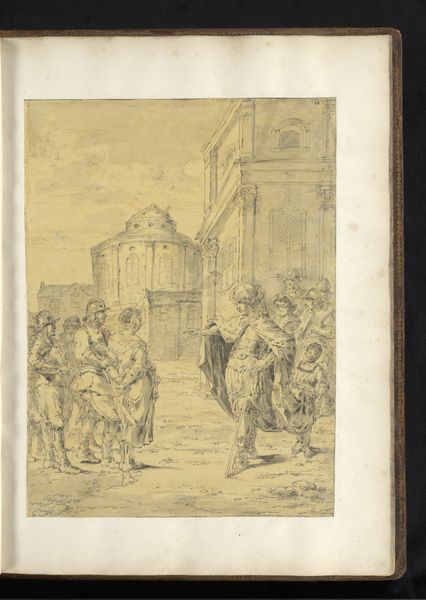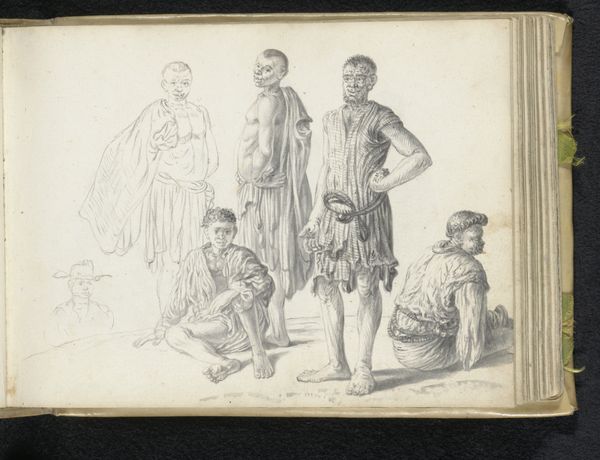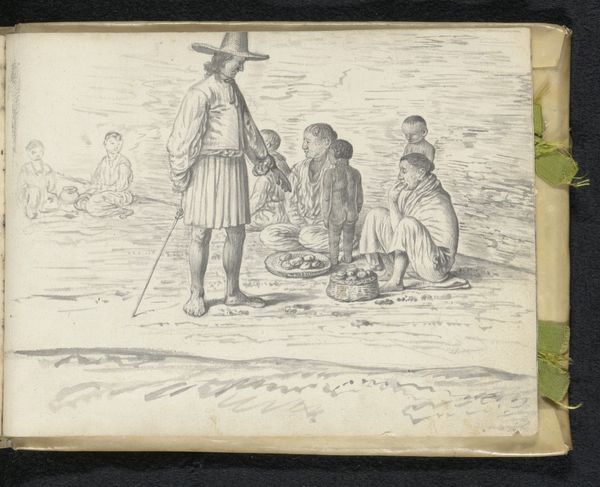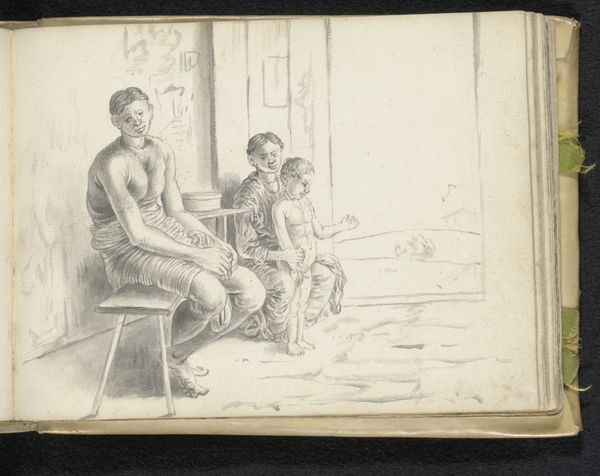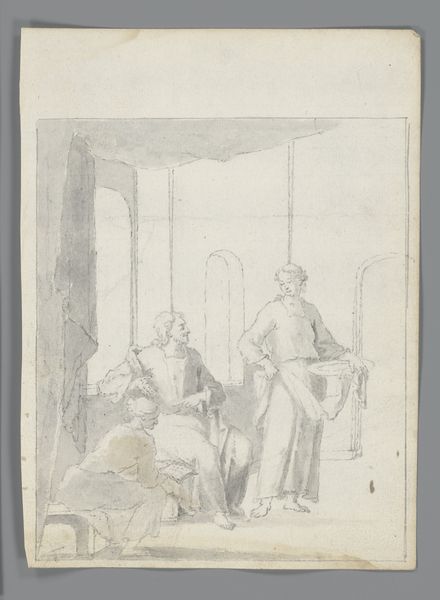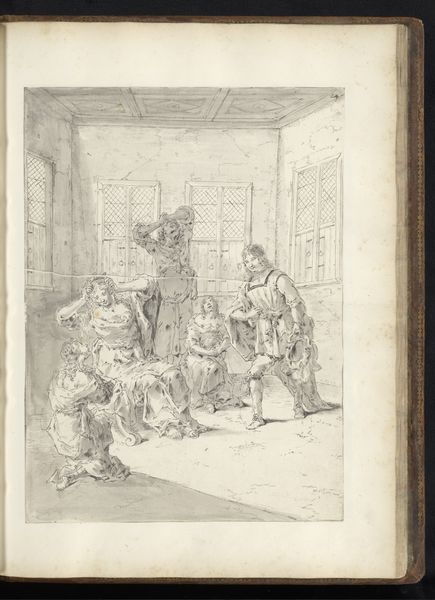
drawing, pencil
#
drawing
#
dutch-golden-age
#
figuration
#
coloured pencil
#
pencil
#
genre-painting
Dimensions: height 148 mm, width 196 mm
Copyright: Rijks Museum: Open Domain
Curator: Esaias Boursse created this pencil drawing titled, "Scene with a party in a tavern or living room," in 1662, offering us a glimpse into 17th-century Dutch life. Editor: My immediate reaction is one of stark observation. The pencil work captures detail economically but also leaves an overall stark and sober feel to the composition. The gray scale feels weighty in contrast with the levity one might expect from a party. Curator: Indeed, and situating it in its historical context, it is crucial to recognize the presence and depiction of the people of color at the edges, revealing a more profound statement on race, trade, and colonialism during the Dutch Golden Age. This setting and the placement of certain figures within raises uncomfortable questions of power. Editor: The composition seems very much aligned with Dutch painting traditions from this era. While stark overall, the detailing is extraordinary, a meticulous eye crafting this scene in tonal precision. See the use of diagonals established through the chairs and standing figures which add complexity to a fairly straightforward setting. Curator: I read these stark visual binaries not only in their formal structure, but also through their political implications. Consider the visible symbols of status amidst presumed exoticism, such as dress. The way those deemed "other" exist only on the periphery, never fully centered or celebrated within the image’s space, becomes deeply resonant with social hierarchies of the period. Editor: Agreed, and perhaps Boursse even attempts to disrupt, or perhaps simply acknowledges the contemporary power structures through precise depictions. He invites visual analysis—each deliberate stroke carries its own intention, creating tension between aesthetic enjoyment and symbolic discourse. Curator: Right, and that complexity is what makes the piece compelling, sparking conversation that transcends the limits of representation while hopefully providing necessary historic contexts. Editor: An observation rendered, I’d suggest, with great clarity.
Comments
No comments
Be the first to comment and join the conversation on the ultimate creative platform.
